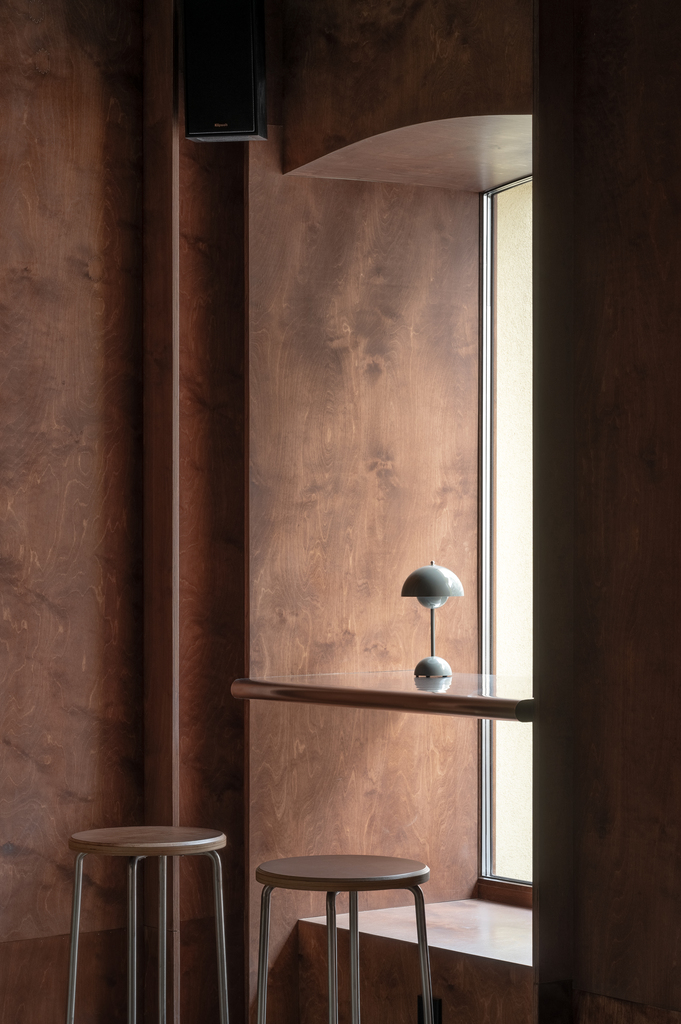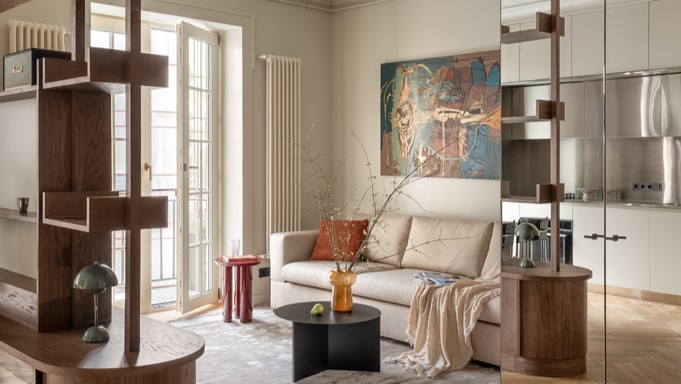
Power cuts, missile attacks and air raids are just some of the challenges Ukrainian designer Nastia Mirzoyan encountered when she reconfigured and refurbished an apartment in Kyiv.
The conflict also means that there are problems with materials and furniture. In the early days of the war, such items weren’t being imported at all. Nowadays, imports are back, but some – like glass and plywood – have become very expensive, she explains, “and delivery times are unpredictable.”
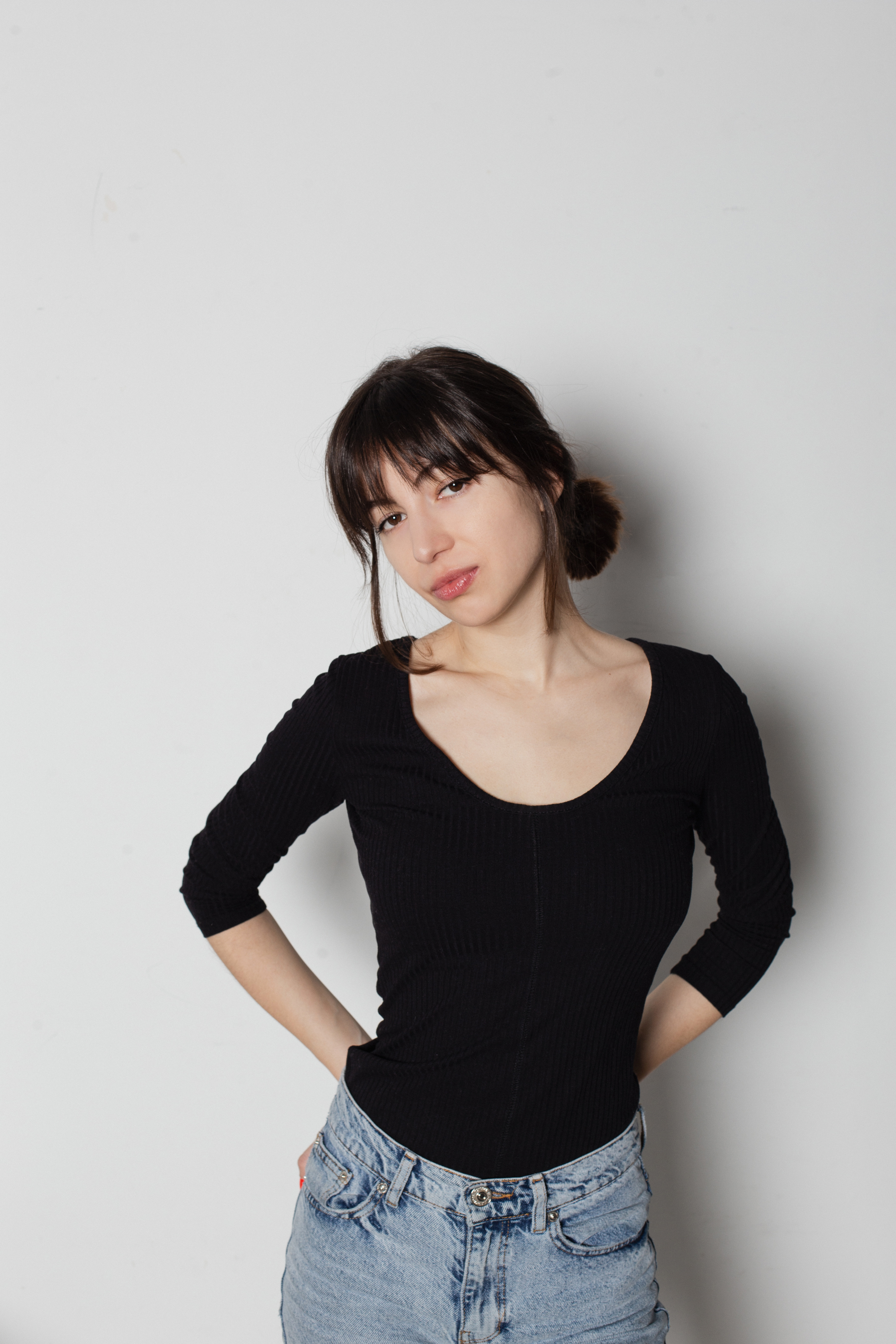
Darvina – the 55 m² family apartment of an existing client – is in the capital’s historic centre. It’s housed in a classical building stylised under the Stalinist era, and Studio Mirzoyan was tasked with reworking it to rent out.
Many of the studio’s team now live outside the capital or overseas, meaning only Mirzoyan was on site. Their design involved changing the layout from a kitchen and two reception rooms to an open-plan kitchen-cum-dining space and living room. The two zones are separated by a bespoke oak shelving unit. This piece and all the joinery was made by local cabinet makers, though Mirzoyan points out that such labour is in short supply. “Skilled workmen are often unavailable or unable to reach the site due to safety concerns or military obligations.”
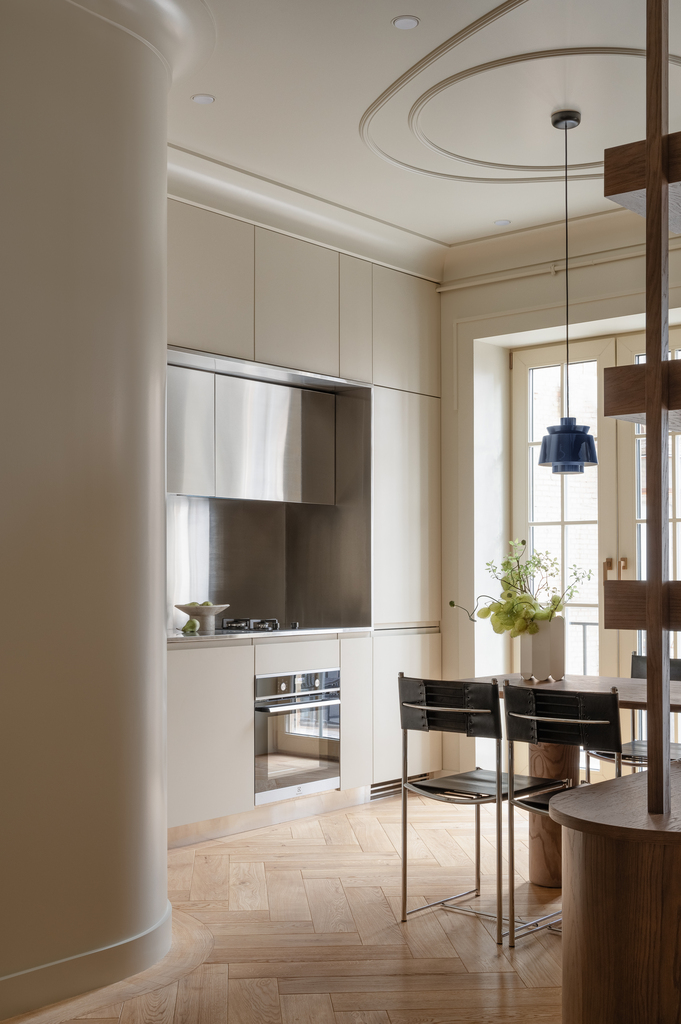
For the other furniture, she chose pieces that were already in the country: the blue lamp over the dining table and red coffee table are both from &Tradition, and the black coffee table is from HAY. Only the tiles were imported.
With its floors of parquet and marble, and French windows opening out onto balconies, the apartment had found a local tenant before construction was completed.
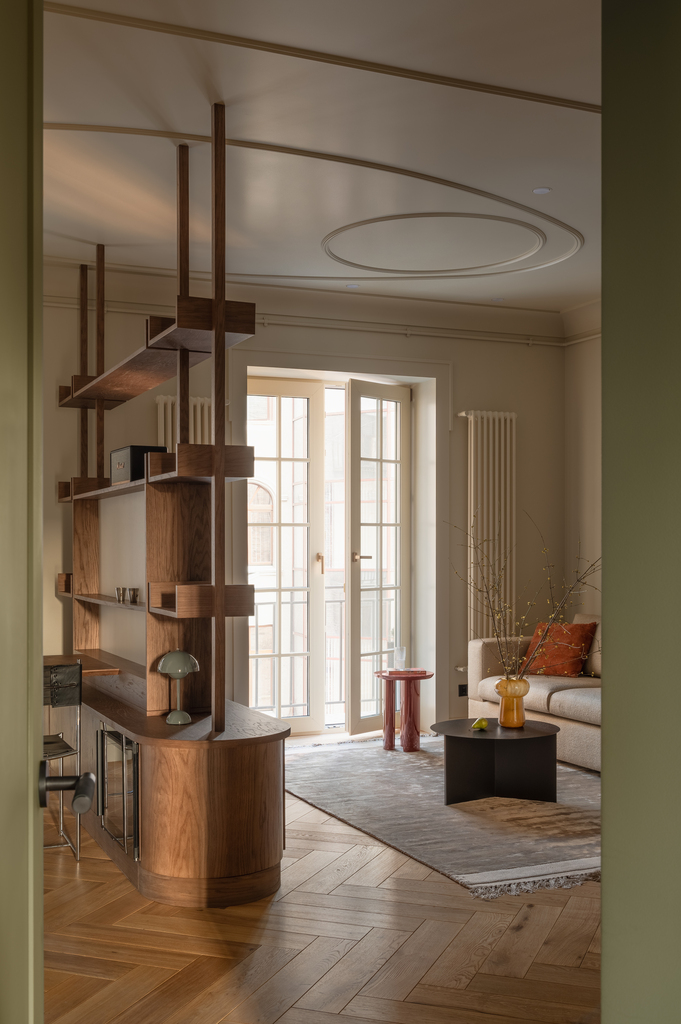
As well as the practical and financial headaches of designing in Ukraine at the moment, “the emotional and psychological toll on both clients and designers cannot be understated,” she says. “The conflict adds a layer of stress and uncertainty to every decision and action.”
This uncertainty has led to her to scheduling work on all her projects in smaller, manageable phases. “This allows for flexibility in case of sudden interruptions, ensuring progress can continue whenever possible.”

Despite this highly challenging environment, she notices a lot of commercial activity in Kyiv, with people opening bars and coffee shops – meaning available labour is in high demand. “I admire people who are taking such risks in this situation, it inspires me to work harder.”
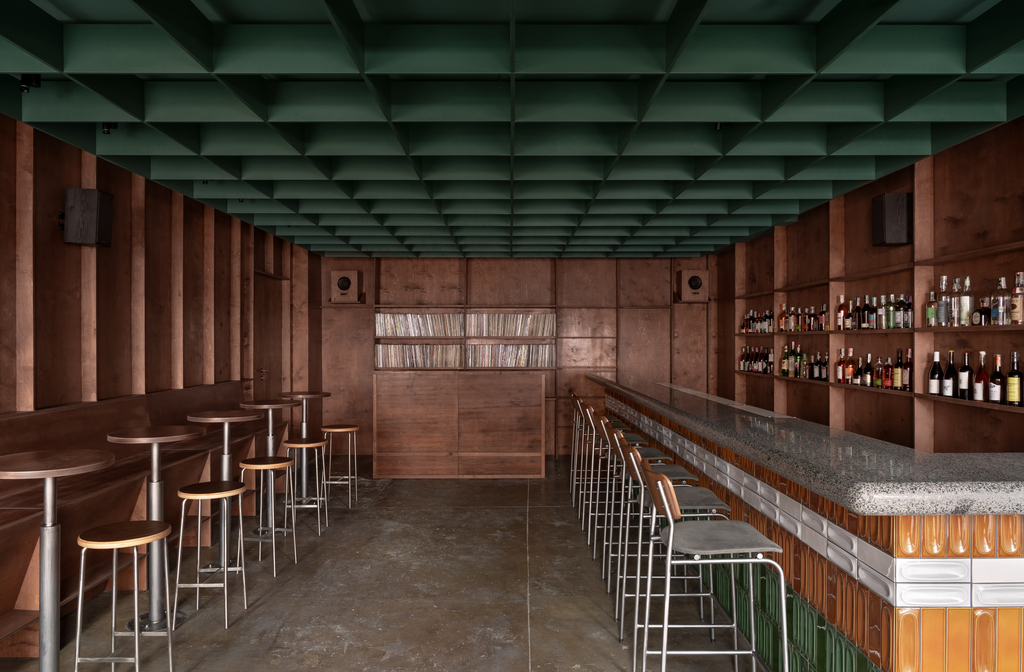
Mirzoyan, formerly with Kyiv’s major architecture and design firm, Balbek Bureau, founded Studio Mirzoyan four years ago. She’s now working on a hotel in Lviv, where the brief includes underground shelters. “This is a very new type of designing for me,” she says. The aim is to complete the hotel next winter, “depending on the military and geopolitical situation.”
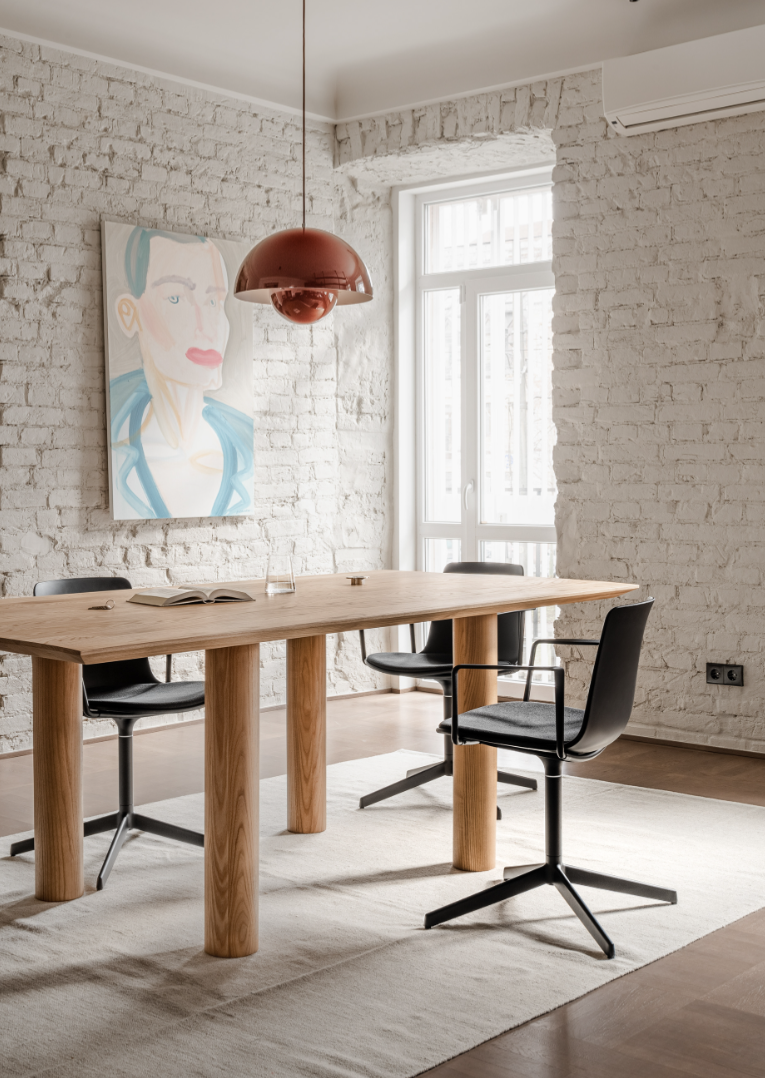
For Mirzoyan, design and beauty play a crucial role in a conflict zone. “They provide a sense of normalcy, comfort and hope amid chaos.”
And well-designed spaces “can offer emotional refuge, uplift the spirits of those affected by the conflict, and can help people maintain a connection to their culture and heritage,” she adds. This in turn “reinforces their identity and community bonds during challenging times”.
